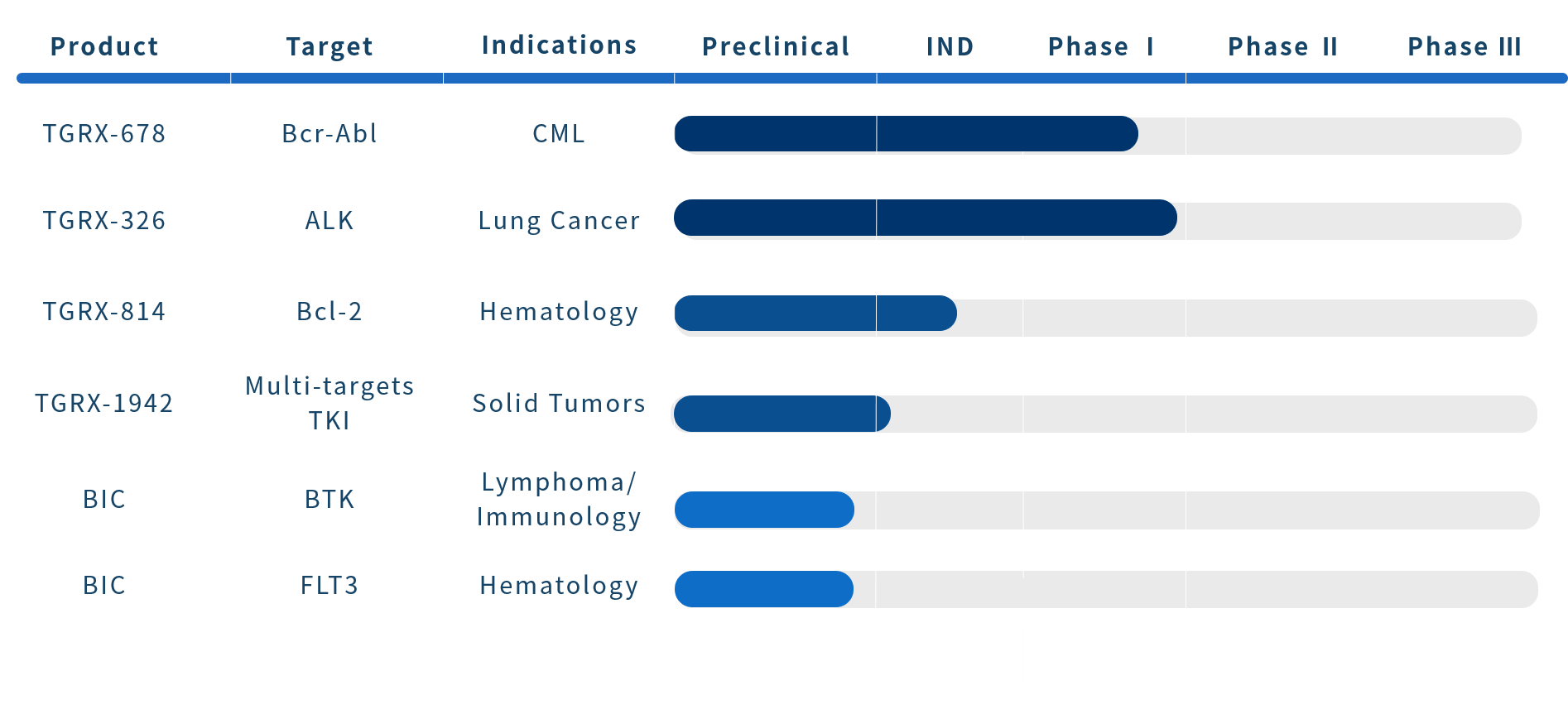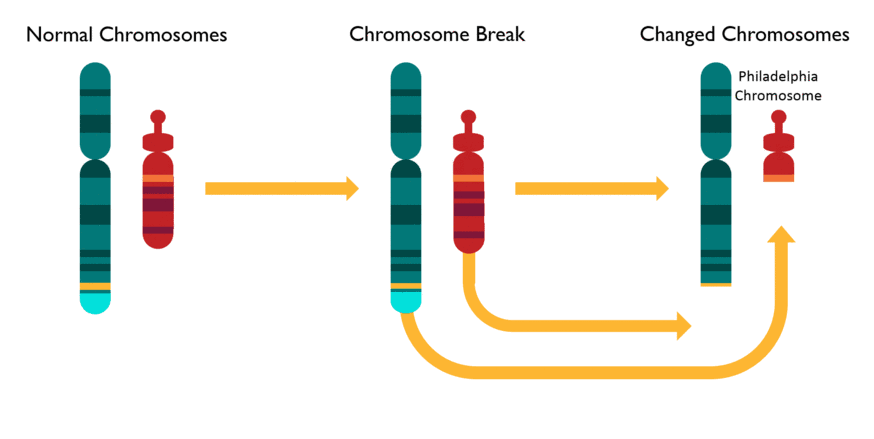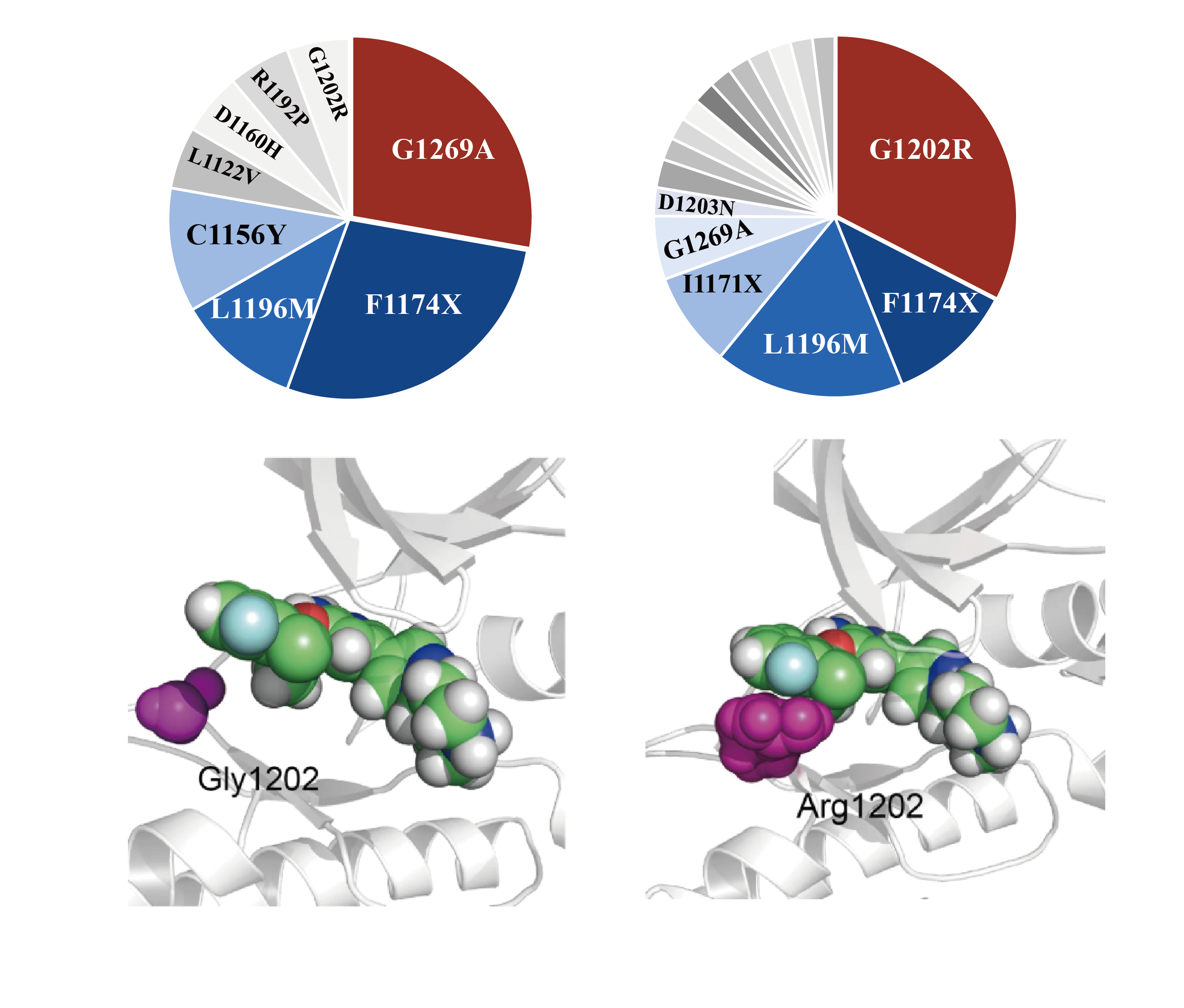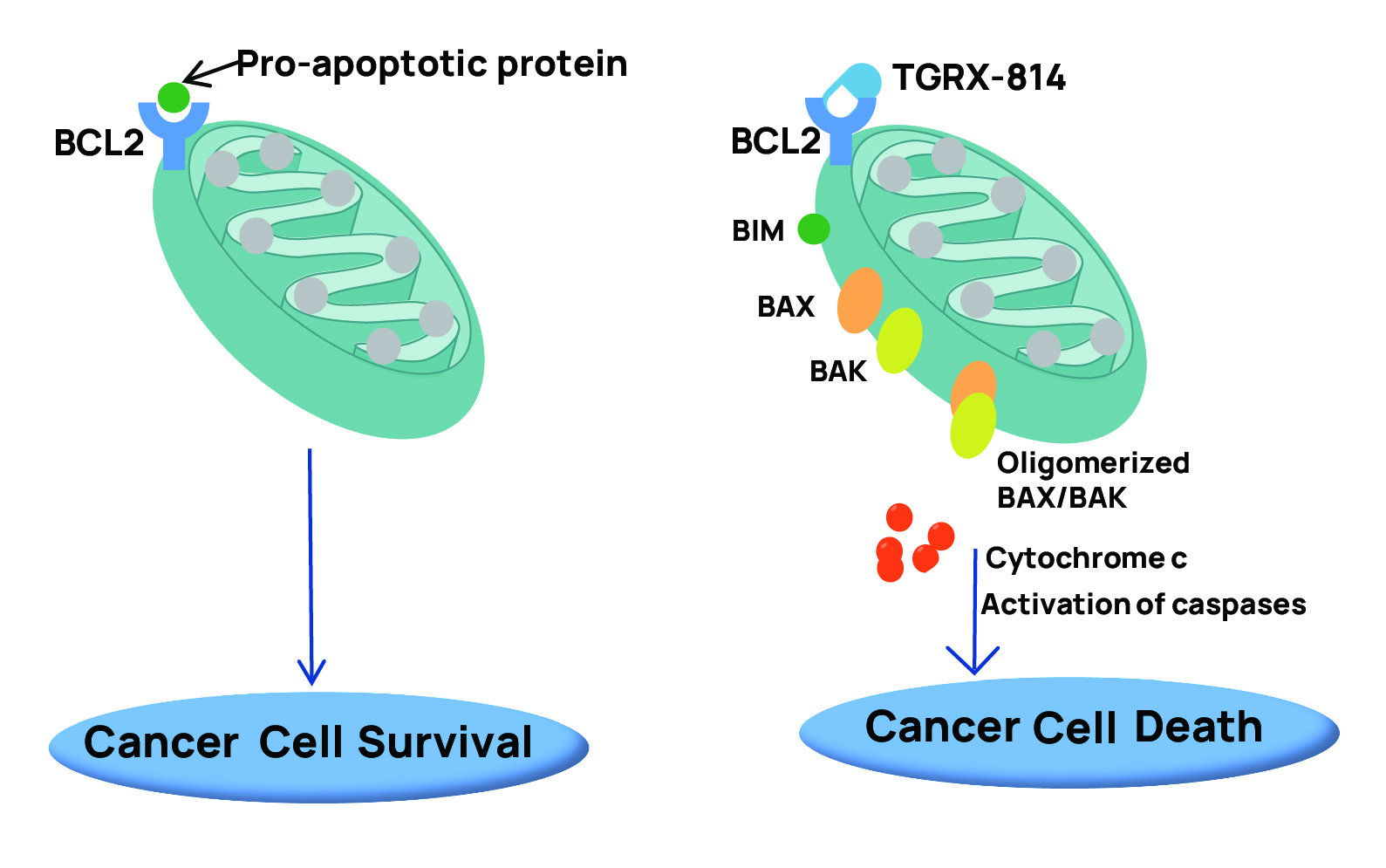All Pipelines

TGRX-678 BCR-ABL inhibitor
- Novel mechanism
- Best-in-Class potential
- Global development rights
- CDE clinical license obtained
- First subject dosed

TGRX-678, an allosteric BCR-ABL1 inhibitor with a distinct mechanism of action and a novel structure, is used to treat patients with Philadelphia chromosome-positive chronic myeloid leukemia (Ph-CML) or CML patients with drug resistance mutations such as T315I. TGRX-678 is independently developed by the TargetRx R&D team and designed through the structure-based drug design method. TGRX-678 mimics the function of natural ABL1 myristoyl N-terminal polypeptide. TGRX-678 binds to the myristate site at the C-terminal of the kinase domain, causes the cross-linking of SH3 and SH2 domains to the kinase domain, thus effectively locking the kinase in its inactive state.
TGRX-678, belonging to Class 1 innovative drugs, has shown strong biological activity and excellent selectivity in preclinical studies is indicative of its top rank in China and commanding position internationally. Currently, Phase 1 clinical trial of TGRX-678 is ongoing at Peking University Institute of Hematology and has successfully conducted the dosing of the first human subject.
TGRX-678 is expected to overcome drug resistance to existing therapies as well as the drug intolerance issue and side effects problems. Besides, it is intended to break the plight of CML patients requiring life-long medication, and significantly improves the quality of life and prognosis of CML patients. Furthermore, the drug combination of TGRX-678 with the previous three generations of traditional inhibitors binding to catalytic sites provides enhanced synergistic effects aiming at dose reduction, toxicity relief, and efficacy improvement. Additionally, compared to single-drug therapy, combination therapy could effectively overcome drug resistance caused by multiple mutations. Thus, TGRX-678 provides a promising treatment option for CML patients to achieve treatment-free remission (TFR).
TGRX-678, belonging to Class 1 innovative drugs, has shown strong biological activity and excellent selectivity in preclinical studies is indicative of its top rank in China and commanding position internationally. Currently, Phase 1 clinical trial of TGRX-678 is ongoing at Peking University Institute of Hematology and has successfully conducted the dosing of the first human subject.
TGRX-678 is expected to overcome drug resistance to existing therapies as well as the drug intolerance issue and side effects problems. Besides, it is intended to break the plight of CML patients requiring life-long medication, and significantly improves the quality of life and prognosis of CML patients. Furthermore, the drug combination of TGRX-678 with the previous three generations of traditional inhibitors binding to catalytic sites provides enhanced synergistic effects aiming at dose reduction, toxicity relief, and efficacy improvement. Additionally, compared to single-drug therapy, combination therapy could effectively overcome drug resistance caused by multiple mutations. Thus, TGRX-678 provides a promising treatment option for CML patients to achieve treatment-free remission (TFR).

TGRX-326 ALK/ROS1 inhibitor
- Next-generation ALK/ROS1 dual inhibitor
- Powerfully Combating existing drug resistance
- Global development rights
- CDE clinical license obtained

TGRX-326, a dual inhibitor of the ALK (anaplastic lymphoma kinase) and ROS1 (c-ROS proto-oncogene 1) receptor tyrosine kinases (RTKs), is the next-generation Class 1 innovative drug for the treatment of ALK/ROS1-positive non-small cell lung cancer (NSCLC). TGRX-326 was designed and optimized through data mining and molecular simulation approaches based on lead compounds which exerted strong inhibitory effects on ALK G1202R and ROS1 G2032R. Not only does TGRX-326 exert strong efficacy (especially towards ALK G1202R& ROS1 G2032R), high selectivity, excellent safety and tolerance concerning its in-vivo and in-vitro bioactivity profiles, but it possesses the potential to reduce clinical dose, reduce toxic side effects, improve drug tolerance and overcome drug resistance issues.
The results of big data analysis and molecular simulations reveal that the conformational change of the ATP-binding glycine-rich loop (ALK G1202R and ROS1 G2032) was primarily responsible for the 1st and 2nd generation-ALK inhibitors resistance. Specifically, the resistance mechanism could be driven by steric effects when glycine at the ALK solvent front mutates into a positively charged arginine with extended side-chain amino acids. Consequently, the solvent front mutation was assumed to hinder drug binding. TGRX-326 with the novel molecular structure exerts the strong binding affinity for ALK G1202R and ROS1 G2032R, indicating an increasing potential to overcome the resistance of the G1202R/G2032R solvent front mutation.
The development status of TGRX-326 stood at a leading position both domestically and internationally. Preclinical in-vivo and in-vitro studies have shown that TGRX 326 exert strong bioactivity and high selectivity for ALK G1202R and ROS1 G2032R. Currently, TGRX-326 is in a Phase 1 study for the treatment of non-small cell lung cancer at the Sun Yat-sen University Cancer Center (SYSUCC) and has completed the first subject dosing (FIH).
The novel molecule structure properties of TGRX-326 show excellent bioactivity and high selectivity against ALK/ROS mutation-resistant NSCLC. Furthermore, TGRX-326 can cross the blood-brain barrier, indicating the significant potential for NSCLC patients with brain metastases. In addition, we are conducting extended indications for TGRX-326 with the purpose to maximize its medical value. Our goal is to provide patients in China with access to affordable drugs that are superior to the current standard of treatment.
The results of big data analysis and molecular simulations reveal that the conformational change of the ATP-binding glycine-rich loop (ALK G1202R and ROS1 G2032) was primarily responsible for the 1st and 2nd generation-ALK inhibitors resistance. Specifically, the resistance mechanism could be driven by steric effects when glycine at the ALK solvent front mutates into a positively charged arginine with extended side-chain amino acids. Consequently, the solvent front mutation was assumed to hinder drug binding. TGRX-326 with the novel molecular structure exerts the strong binding affinity for ALK G1202R and ROS1 G2032R, indicating an increasing potential to overcome the resistance of the G1202R/G2032R solvent front mutation.
The development status of TGRX-326 stood at a leading position both domestically and internationally. Preclinical in-vivo and in-vitro studies have shown that TGRX 326 exert strong bioactivity and high selectivity for ALK G1202R and ROS1 G2032R. Currently, TGRX-326 is in a Phase 1 study for the treatment of non-small cell lung cancer at the Sun Yat-sen University Cancer Center (SYSUCC) and has completed the first subject dosing (FIH).
The novel molecule structure properties of TGRX-326 show excellent bioactivity and high selectivity against ALK/ROS mutation-resistant NSCLC. Furthermore, TGRX-326 can cross the blood-brain barrier, indicating the significant potential for NSCLC patients with brain metastases. In addition, we are conducting extended indications for TGRX-326 with the purpose to maximize its medical value. Our goal is to provide patients in China with access to affordable drugs that are superior to the current standard of treatment.

TGRX-814 BCL2 inhibitor
- Best-in-Class potential
- Overcoming drug resistance to existing cancer therapies
- Global development rights
- Broad clinical applications

TGRX-814 is a highly selective inhibitor of the BCL2 (over BCL-XL) for the treatment of CLL with or without the del(17p)/TP53 mutation, NHL, SLL, DLBL, MM, etc. Notably, TGRX-814 has an excellent selectivity profile for BCL-XL. TGRX-814 is modified and optimized through classical bioisosterism and molecule simulation technologies. In-vitro and in-vivo assays have shown that TGRX-814 improves oral metabolism, increases in vivo exposure, and reduces compound clearance while maintaining in vitro and in vivo bioactivity. Moreover, TGRX-814 obtained over 2-fold increase in bioavailability compared to the marketed drug Venetoclax, resulting in a significant increase in efficacy.
Currently, TGRX-814 is in the IND-enabling phase and would soon enter the clinical phase, offering patients better treatment options and hope of prolonged survival.
Currently, TGRX-814 is in the IND-enabling phase and would soon enter the clinical phase, offering patients better treatment options and hope of prolonged survival.







 Tel: +86-0755-86934300
Tel: +86-0755-86934300 3rd Floor, Building A1, Kexing Science Park, No. 15 Keyuan Rd., Nanshan District, Shenzhen, China
3rd Floor, Building A1, Kexing Science Park, No. 15 Keyuan Rd., Nanshan District, Shenzhen, China E-mail:
E-mail: 